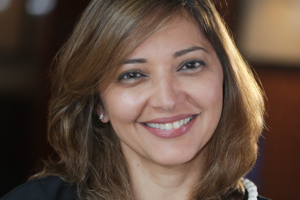
As Marriott International, Bethesda, Maryland, pivots away from its perceived very traditional roots, Tina Edmundson has been charted with elevating the presence of its luxury and lifestyle brands.
Edmundson, Marriott’s global brand officer, luxury and lifestyle hotels, joined the company in 2008 and had previously spent several years with Starwood Hotels & Resorts Worldwide, Stamford, Connecticut, and helped establish its W Hotels brand and reposition St. Regis Hotels & Resorts. Now she is working to strengthen the portfolio of Marriott’s Edition, Autograph Collection, Renaissance, Moxy, The Ritz-Carlton, Ritz-Carlton Reserve, JW Marriott and Bulgari Hotels brands. HOTELS spoke with
Click here to read the full interview with Edmundson in the September issue of HOTELS.
HOTELS: What was your initial charge in your current position?
Tina Edmundson: We have close to 450 hotels in the luxury and lifestyle space and recently announced an additional 200 over the next several years. That makes Marriott quite prominent in the luxury and lifestyle world, and I’m not really sure if we are quite known for that or get the credit in terms of the size, the depth and the breadth of the luxury lifestyle portfolio.
We also split these brands into stacks to make sure they get the attention they deserve — both from a resource perspective and from an attention perspective — and for making sure we are very focused on them. Edition has two hotels, but Edition is a very, very important brand, and we want to make sure we give these brands individual attention.
HOTELS: What other types of projects have you been working on?
Edmundson: A design strategy for Renaissance is an initiative we are almost done with and will be ready for rollout pretty soon. And with something like that we do work with consultants, and then we go out to designers that do work on our behalf and do design charrettes to make sure that how we’re thinking about the brand and its physical manifestation really comes to life in a meaningful way, and that it is adaptable in different parts of the world.
We’re doing a similar exercise for The Ritz-Carlton, which is a little bit different because you want to make sure you never have a cookie-cutter mentality. How you actually manifest the brand in a resort environment is quite different from an urban environment or a downtown location. Then the sensibilities for that level of luxury customer are quite different locally and culturally. Trying to weave all those pieces through is a bit tricky and requires a lot of focus and attention because this is what will set up the next three or four years’ worth of projects.
HOTELS: Where do you go for inspiration?
Edmundson: Retail is a very easy answer because it is everything from design perspectives to onsite merchandising. Being able to tap into consumer needs is always inspirational. The translation of the retail inspiration to our space is the trick.
Beyond that, I think restaurants, again, which are much more nimble. Smaller businesses tend to do things in a really clever, not very capital-intensive way, which allows for the quickness and the nimbleness.
Where people are going now and what people connect to these days is something a bit more authentic. So, you’re looking for what feels right — not necessarily what looks very polished and put together. When you’re looking for inspiration or trying to think of how you might translate things to your business, if it doesn’t come from a really authentic place, it can be very applied.

